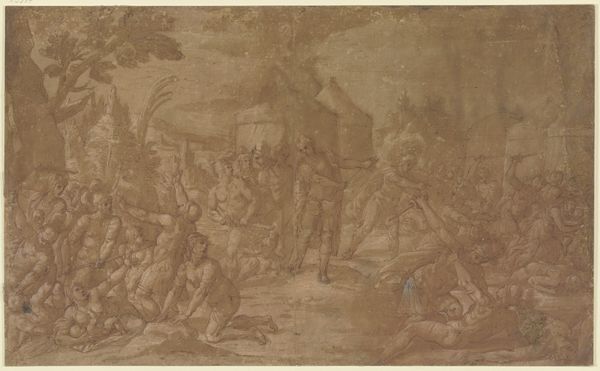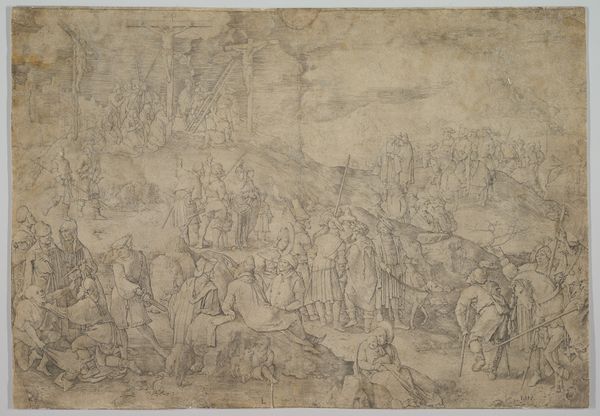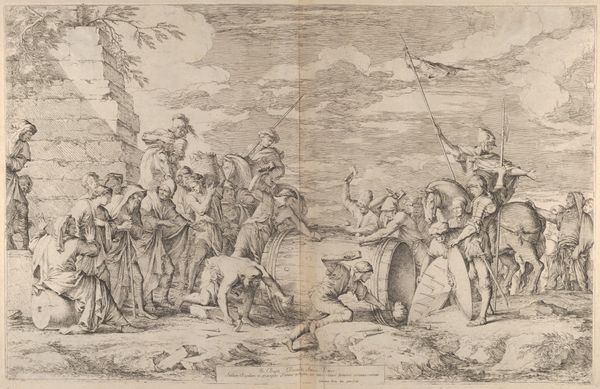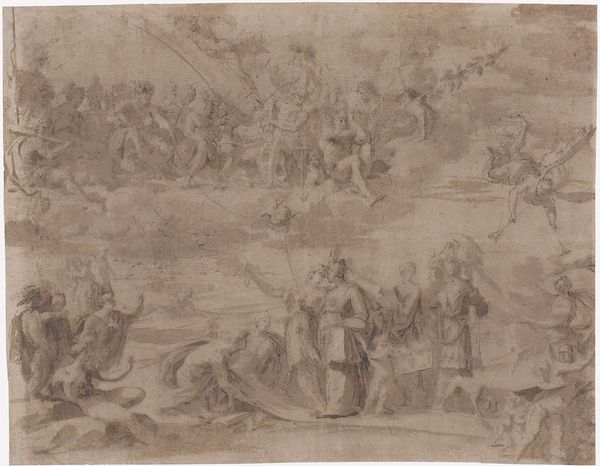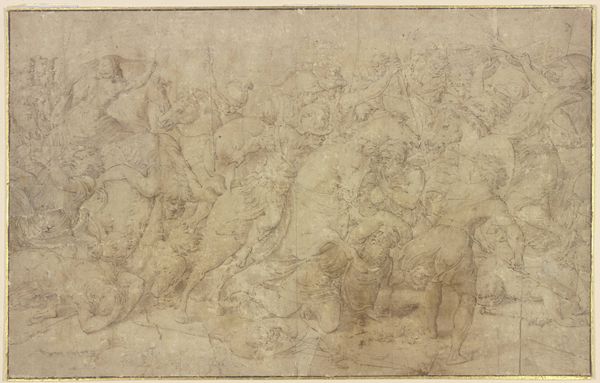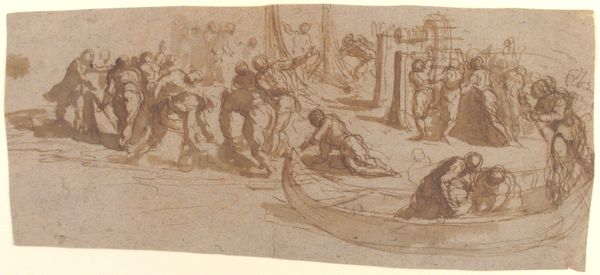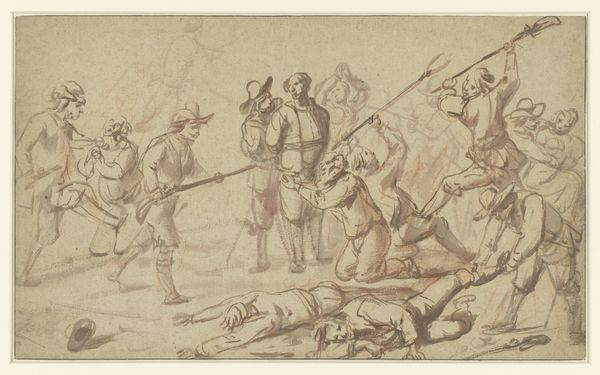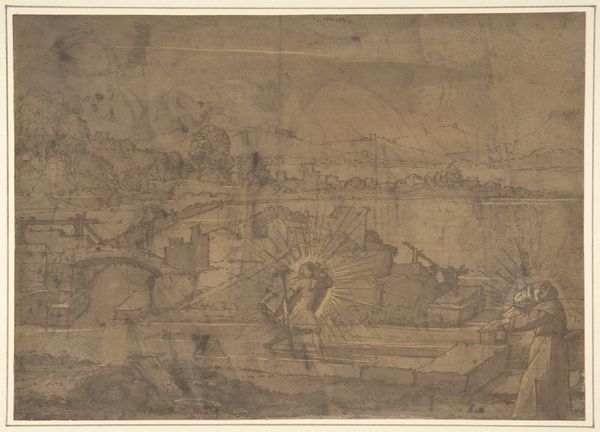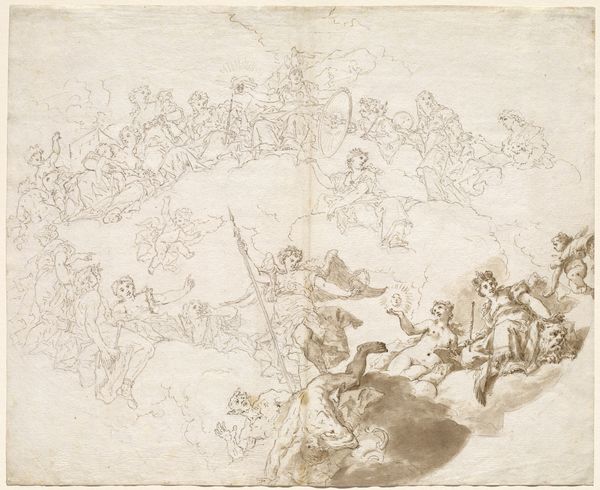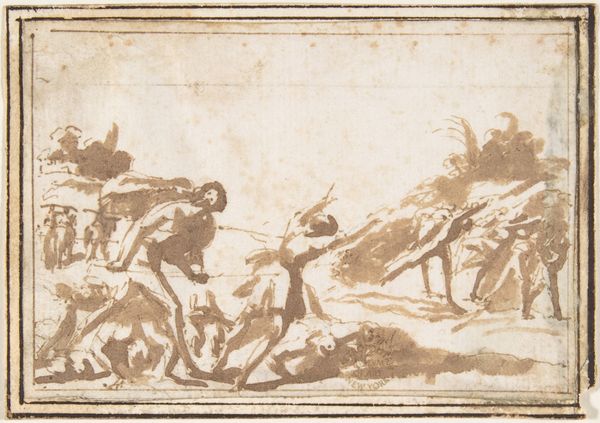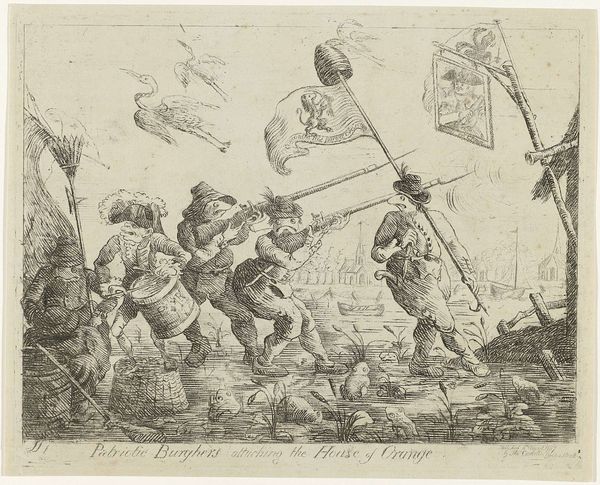
drawing, print, paper, ink, charcoal
#
drawing
# print
#
landscape
#
charcoal drawing
#
figuration
#
paper
#
ink
#
charcoal
#
history-painting
Dimensions: 239 × 374 mm
Copyright: Public Domain
Curator: Looking at this, I immediately think of restless energy, the dust and heat of the march captured in these frenetic lines. Editor: Indeed. This artwork, known as "A Company of Horsemen," was created around 1510 by Battista Franco. It’s rendered in ink and charcoal on paper. Curator: The composition certainly implies movement. These riders aren’t posing; they're a force in transit, their destination uncertain but their purpose, it seems, quite determined. Editor: Renaissance society was deeply hierarchical, and this work seems to perpetuate the trope of military power and authority vested in mounted soldiers. How do we unpack these visual statements today, particularly considering our evolving understanding of justice and power? Curator: The landscape, almost an afterthought, only accentuates this dynamic. This drawing underscores not just mobility but access, too. Only those with status had access to horses, mobility and military activity and visibility. The piece speaks of an exclusionary, elitist paradigm. Editor: The image certainly portrays the politics of visibility, the construction of power, in the early modern era. I am struck by the ways artistic commissions often bolstered a patron's social status, cementing these visual tropes of control and status, in ways which can be interpreted as propagandistic now. Curator: Right. And this work pushes the viewer to consider the human cost and consequences of the social forces on display: exploitation, perhaps the legacy of conquest and colonization... are those stories reflected in these somewhat shadowed figures? Editor: Battista Franco made these sweeping statements utilizing primarily ink and charcoal. Examining artistic choices exposes an important truth; namely, artistic choices were hardly innocent or value-neutral. Franco’s style echoes an array of cultural presumptions about authority that deserves a much deeper inspection. Curator: Precisely! And it highlights that interrogating assumptions about identity, and inequity, are critical to making these inherited representations feel useful today. Editor: By understanding how artists and their patrons contributed to shaping a visual and cultural language around privilege and dominance, we may also perceive the art of resistance that pushes against them.
Comments
No comments
Be the first to comment and join the conversation on the ultimate creative platform.
